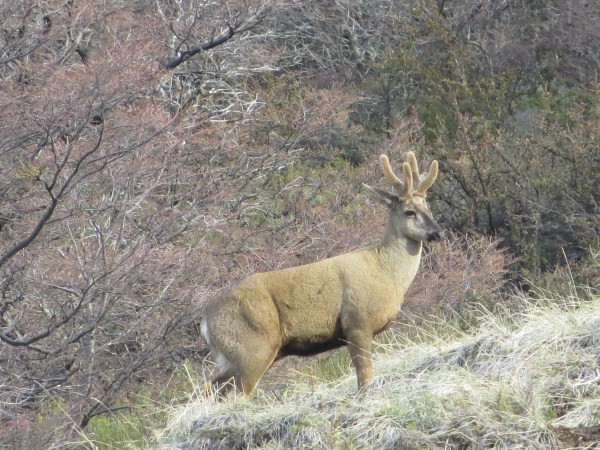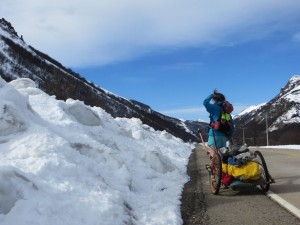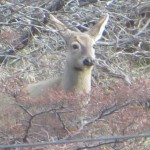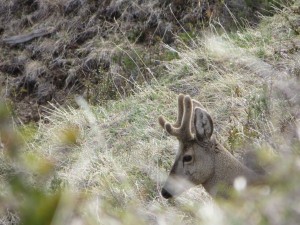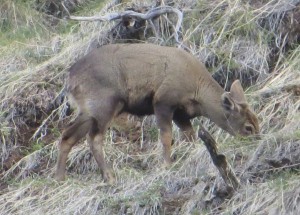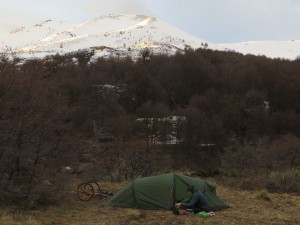Key words: Endangered, habitat, threatened, decomposition, extinct, over-grazing
One evening whilst running over a mountain pass in southern Chile, with snow on either side of the road, we noticed some mammals grazing on the hillside. We stopped to look through our binoculars and guess what we found: PATAGONIAN HUEMUL DEER!!!
Although we had not quite run our daily 20 mile quota, we decided to find flat ground to camp near the river and take the opportunity to watch these very rare deer. We had been searching for weeks for these beautiful animals and felt very privileged indeed to be near them.
A female huemul deer
There are less than 2000 individual Patagonian huemul deer left in the world, living in the mountains, woodlands and plains of southern Chile and Argentina.
They are classed as “endangered”; this means that they are at risk of becoming extinct (no longer found in the wild) if humans do not stop the factors that are threatening their survival. For comparison the giant panda of China is also endangered, but much more well known.
A male huemul deer
Some of the risks for Huemul include: hunting, loss of habitat (the places where they live) due to removal of forests and over-grazing by domesticated livestock. Over-grazing is when too many domesticated animals such as cattle, goats and sheep eat too many plants in an area. Without the plants, soils quickly become dry and without the plants’ roots and shelter, soils blow away in the wind or are swept away by rain.
The charity we are raising money for; Conservacion Patagonica is working very hard to increase populations of Huemul deer to a large area of grassland in Patagonia which was turning into desert due to over-grazing, before they acquired and began restoring it.
Our campsite below the grazing huemul deer
